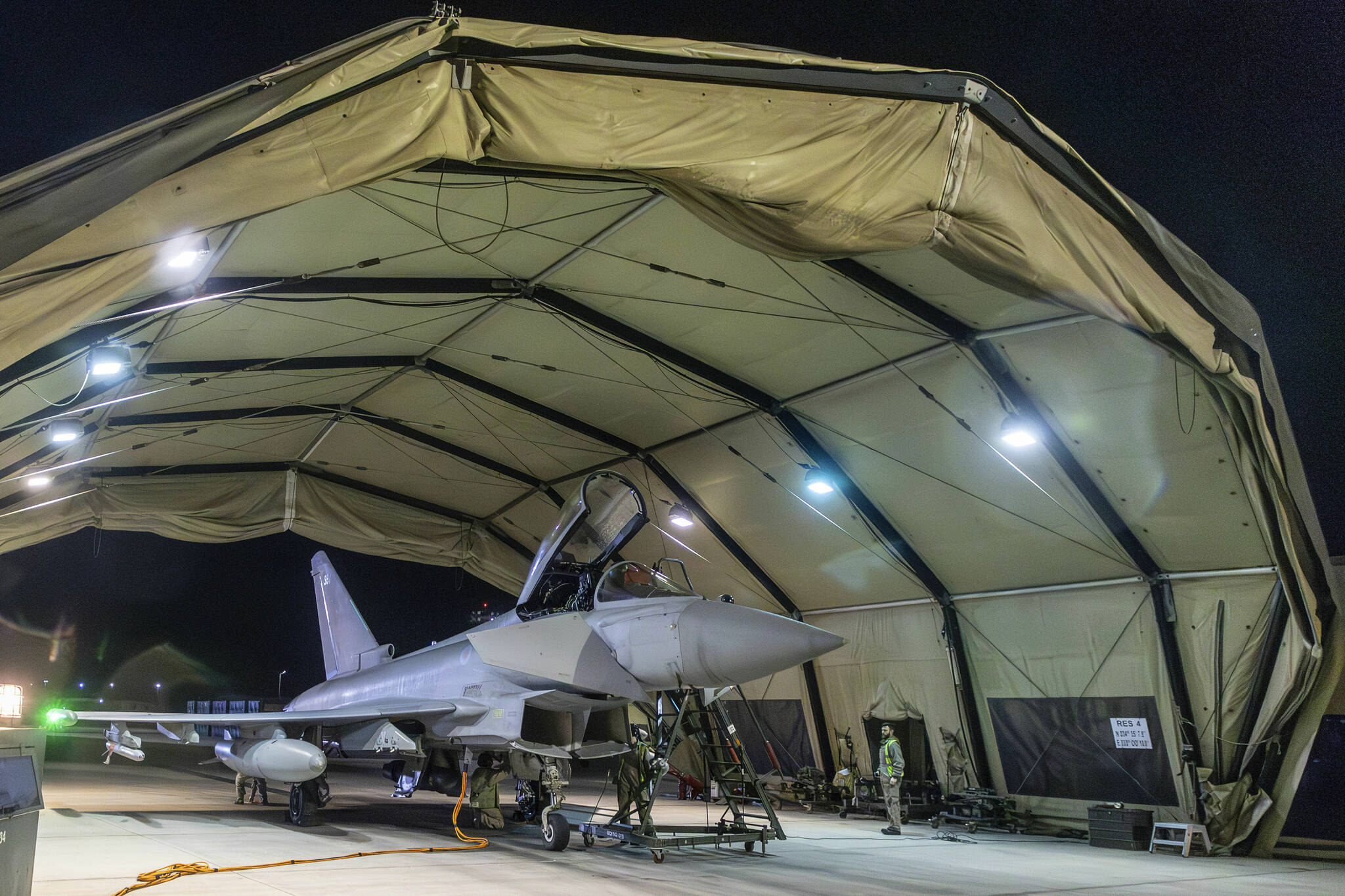U.S. and British forces, with the support of Canada and other allies, attacked more than a dozen sites used by the Iran-backed Houthis in Yemen on Thursday.
President Joe Biden says the strikes were meant to demonstrate that the allies will not tolerate the group’s attacks on ships in the Red Sea.
The U.S.-led operation in the region was launched in response to a Houthi campaign of drone and missile attacks on commercial ships that began after the start of the Israel-Hamas war.
The Canadian Armed Forces deployed three staff officers to join Operation Prosperity Guardian in December.
Thursday was the first military action taken by the coalition, which Biden says came after attempts at diplomatic negotiation.
It also came a week after the White House and partner nations warned the Houthis to end the attacks or face potential military action.
In a statement, U.K. Prime Minister Rishi Sunak said the Royal Air Force carried out targeted strikes against military facilities used by the Houthis. The Defence Ministry said four fighter jets based in Cyprus took part in the strikes.
In response to questions in late December about Canada’s contribution to the Red Sea operation, Canadian officials said the U.S. had asked allies for support in the way of ships, aircraft and operations staff.
“In the immediate term Canada decided to contribute three staff officers; however, the Canadian Armed Forces continues to monitor the situation and examine potential opportunities to support (the operation) in the longer term,” a spokesperson for the Department of National Defence said in an email Dec. 22.
The governments of Australia, Bahrain, Canada, Denmark, Germany, Netherlands, New Zealand and South Korea joined the U.S. and U.K. in issuing a statement Wednesday saying that while the aim is to de-escalate tensions and restore stability in the Red Sea, the allies won’t hesitate to defend lives and protect commerce in the critical waterway.
Earlier this week, the Houthi rebels fired their largest-ever barrage of drones and missiles targeting shipping in the Red Sea. U.S. and British ships and American fighter jets shot down 18 drones, two cruise missiles and an anti-ship missile. And on Thursday, the Houthis fired an anti-ship ballistic missile into the Gulf of Aden, which was seen by but did not hit a commercial ship.
The rebels, who have carried out 27 attacks involving dozens of drones and missiles since Nov. 19, had warned that any attack by American forces on its sites in Yemen will spark a fierce military response.
A high-ranking Houthi official, Ali al-Qahoum, vowed there would be retaliation. “The battle will be bigger … and beyond the imagination and expectation of the Americans and the British,” he said in a post on X.
The Houthis did not immediately offer any damage or casualty information.
A senior administration official said that while the U.S. expects the strikes will degrade the Houthis’ capabilities, “we would not be surprised to see some sort of response.” Officials said the U.S. used warplanes based on the navy aircraft carrier USS Dwight D. Eisenhower and air force fighter jets, while Tomahawk missiles were fired from navy destroyers and a submarine.
The Houthis said their assaults are aimed at stopping Israel’s war on Hamas in the Gaza Strip. Their targets increasingly have little or no connection to Israel and imperil a crucial trade route linking Asia and the Middle East with Europe.
About 12 per cent of the world’s trade typically passes through the waterway that separates Africa and the Arabian Peninsula, including oil, natural gas, grain and everything from toys to electronics.
READ ALSO: U.S. and Britain say their navies shot down 15 attack drones over the Red Sea

